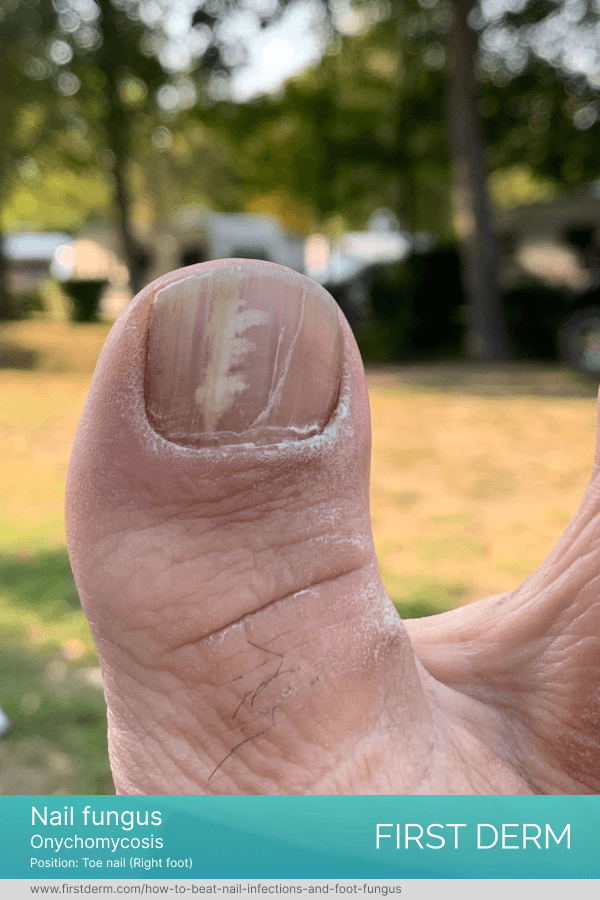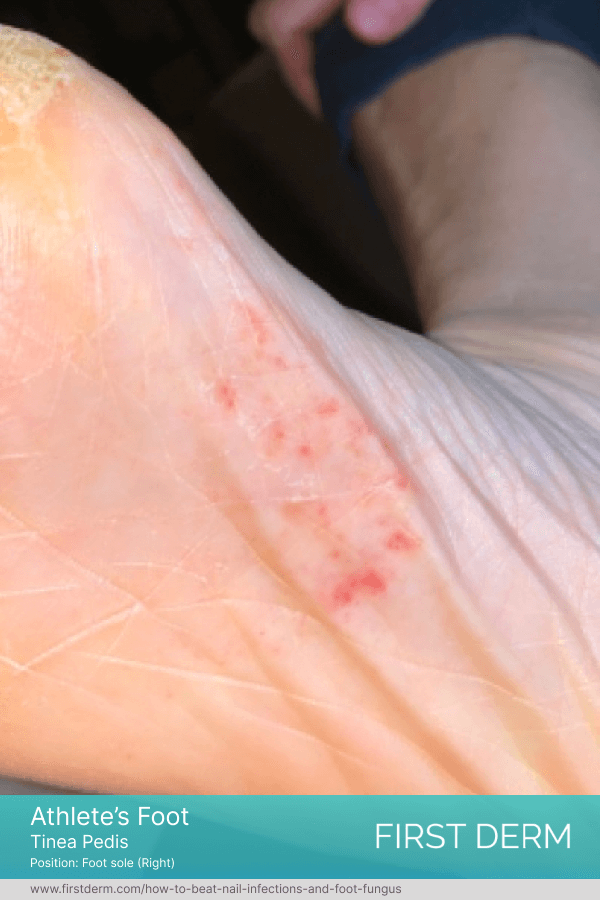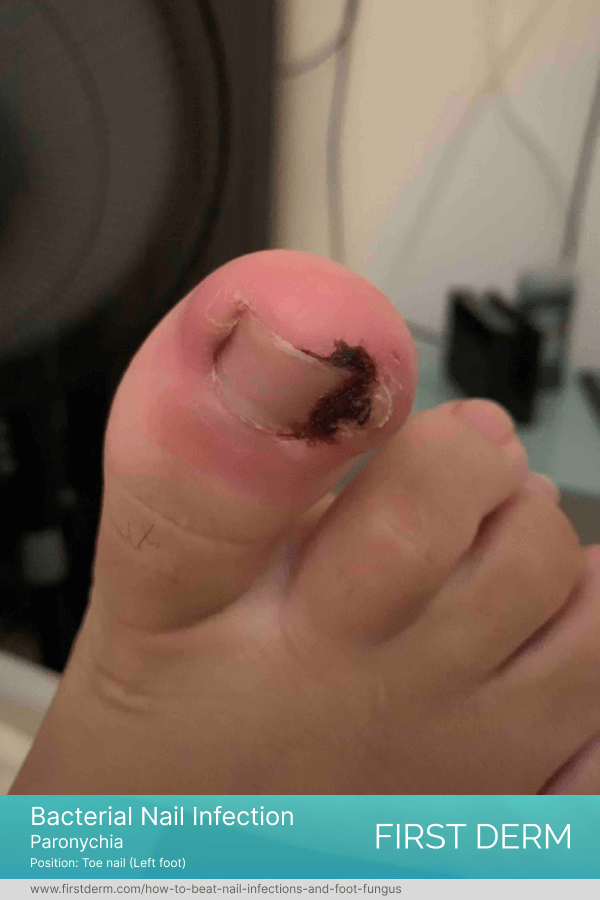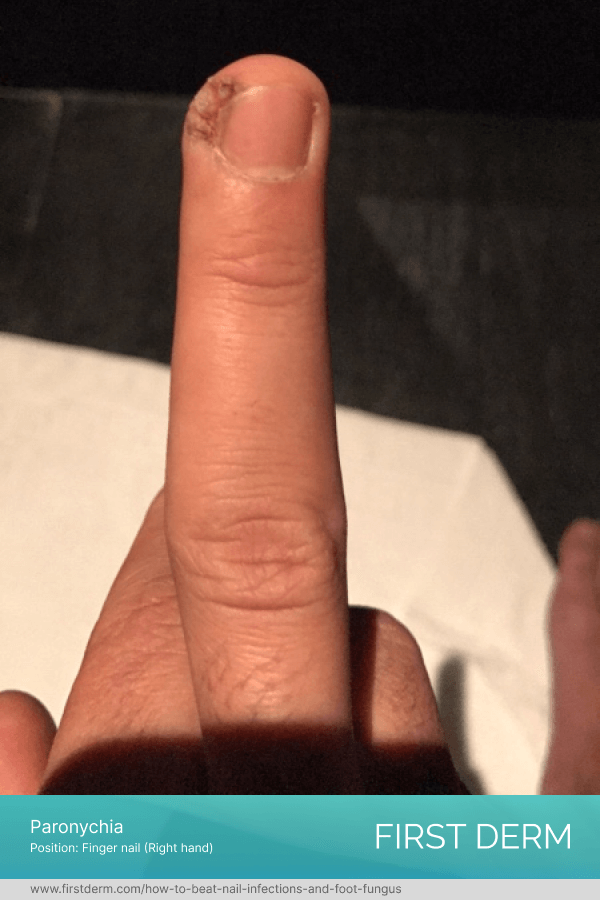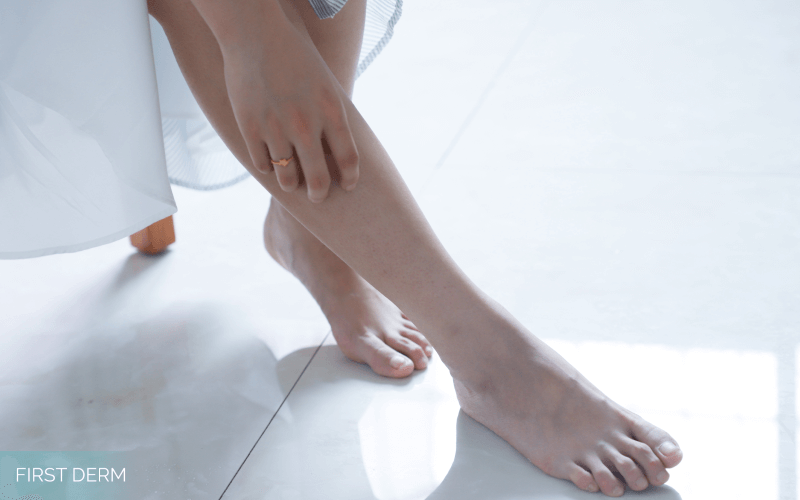How to beat nail infections and foot fungus
Have you ever suffered from an infected nail? Has anyone ever complained to you about the awful smell coming from your feet that could be due to foot fungus? If you have gone through these experiences, you are not alone. Toenail infections, fingernail fungus and foot fungus are more common conditions than you would dare to believe. In fact, American Academy of Dermatology shows that 99% of general population experience some type of a nail disorder during their lifetime.5 Keep reading to find out how to identify these conditions, what cause them and how to get rid of them fast and easily.
What is nail infection?
Infection is a process where germs such as bacteria, viruses or fungi invade and grow on various parts of your body, resulting in symptoms like pain, swelling, redness and localized temperature increment. Infection of the toes and fingers can be widely categorized into two as:
- Fungal nail infections (onychomycosis)
- Bacterial infection of the skin around the nail (paronychia)
Fungal nail infections
Most of the time infections of the nails are caused by fungi. Fungi are microscopic organisms that might be normally present on your skin without giving you any trouble. But if they become accumulated in one area, it can cause infections. Nail infection is not a rare condition. In a study conducted in the US, it has been found that 12% of the general population is affected by this.1 Also, the same study depicted that the infection is more common among the elderly.
Fungal nail infections are not restricted to toenails. Fingernails can also get infected, but it is less common to see this on fingernails. It starts with the nail, but there is no guarantee it would stop there. The infection can spread into the adjacent skin and in between your toes, in which case it is given the name ‘athlete’s foot’.
Bacterial infection of the skin around the nail
Inflammation of the skin around the nail is given the name paronychia. It can be either acute, which means developed within a short period of time, or chronic, which means long lasting. Acute inflammation is often caused by bacteria such as Staphylococcus aureus or Streptococcus. Rather than directly involving the nails, bacteria grow on the skin folds surrounding the nails and cause inflammation of the skin in this area. Also, if the connection between the nail folds (the skin folds on either side of the nail) and the nail is breached, it creates a path through which these bacteria can get under the nail.
Unlike fungal infection, this is often a complication of another condition like an ingrown nail. In fingernails, it can occur because of contact dermatitis. Also, it has been found out that fungal infections are often associated with paronychia.2
How to identify nail infections
Fungal nail infections can be easily identified by the appearance of the nail. Most of the time, the infection begins closer to the edge of the nail and then spreads in towards the center. It would appear discolored and often a lighter shade than the healthy nail. The nail may get thicker and crack at some parts, and it might also get separated from the nail bed. At later stages, the nail becomes brittle, and fragments off, sometimes resulting in falling off of the entire nail.
Bacterial nail infection mainly involves the skin surrounding the nail. Therefore, you should inspect the skin in this area and see if you can see any swelling, redness or pus collected underneath the skin. Pus is a yellowish liquid formed by the infected tissue, that may contain dead immune cells, tissue debris and microorganisms that caused the infection, which in this case, is bacteria. It is common to see an abscess with pus collected inside, on the skin where the nail meets the nail bed. Also, the skin in the infected area would be tender, painful and warm to touch.
What causes nail infections
Bacteria and fungi are responsible for paronychia and onychomycosis respectively. You can catch these microorganisms in various ways. Especially toes are prone to these conditions. Sweat and bacteria can accumulate on your feet and between your toes, especially during a long day of wearing covered shoes. The humidity creates the perfect breeding ground for different bacteria and fungi.
Cuts or broken skin around the nail, and sometimes trimming the nails too short or biting nails could cause infection. Trauma to the nail bed, for example dropping heavy objects on your hand or feet can also lead to this. Ingrown nails are another common reason.
Also, nail infection can be a type of contact dermatitis, in which case you can catch the germs from another person via direct contact with the infected area. Walking barefoot outdoors or in public places is another way you might catch the germs. Frequent manicures and pedicures can also cause nail infection, especially if the instruments used are not properly disinfected.
Also, scientific studies have shown that people with the following conditions are more likely to get nail infection than others.
- People suffering from diabetes mellitus: diabetic neuropathy causes loss of sensation of minor injuries to feet, leading to ignored and untreated small wounds getting infected.3 Also, vessel damage caused by chronic diabetes reduces the body’s ability to fight against infection.
- People with peripheral vascular disease where circulation in peripheries such as hands and feet is4
- People with weakened immune systems4
- People who are exposed to chemical irritants such as patients undergoing cancer chemotherapy.2
Occupational exposure to various irritant chemicals could be another cause for this. Also, repeated mechanical trauma is another notable factor. In women, fingernail fungus is a common complication of acrylic nails.5 Acrylic nails are glued to the nails with the help of an adhesive. If this is not done properly, or if they become loose, it would create a moist layer of space between the nail and the acrylic, which provides perfect place for bacteria and fungi to grow. A study conducted in 2018 shows the risk of using some nail polishes, as it may provide breeding ground for certain fungi.6
Foot fungus
You return home from a long day at work and finally remove your shoes. You are immediately greeted with the awful smell, and left wondering, ‘why are my feet so smelly?’ It is a problem we all face and are desperately trying to find a solution to. Smelly feet are often a result of foot fungus. In addition to that, foot fungus causes pain, itchiness, peeling, cracked and scaly skin.
The most common type of foot fungus is the athlete’s foot. The most concerning fact about this condition is potential spreading to literally any part of your body. If you scratch your feet, and then touch another body part, for example, armpit, with the same hand, the infection will spread to your arm pit as well. Therefore, it is very important to see your doctor if you note a rash like infection in your feet, that is not healing on its own.
How to get rid of nail infection and foot fungus fast
If you suspect you have an infected nail, it is very important you reach out to your dermatologist and start treatment as soon as possible. People tend to neglect toenail infections, as they can be painless and present with a minimum number of symptoms. But it can exacerbate into very serious conditions including cell death, and ultimately require amputation. The latter can be seen with diabetic patients with long neglected toenail infections.7
If your infection is not severe, you can try some over the counter medication, such as antifungal creams. But it is not guaranteed to cure the fungal infection altogether. It is possible for the infection to flare up again after a brief period of absence.
A recent study has brought about a novel treatment option for fungal infection, which is easy and cost effective.8 They suggest Vicks VapoRub which is a salve containing menthol, as an effective treatment for fungal infection. Natural antiseptic oils such as tea tree oil, and vinegar are also considered effective options of treatment. However, it is important to seek medical advice if those methods are not improving the symptoms.
Once you approach a medical professional, they would extract some samples (e.g. nail clippings) and send them for lab tests to identify the exact cause of the infection. Best treatment is determined based on the results of these tests.
Prescription drugs include a variety of medication. Usually, first comes the topical treatments, where you apply medication on the affected site. It alone has a success rate of 10-50%.9 The fastest way to get rid of fungal infection is believed to be oral antifungal drugs. Terbinafine, Itraconazole and Fluconazole are some drugs that are clinically proved to be effective.9
Bacterial nail infections are treated with locally applied antiseptic agents. With the course of the infection with continued treatment, topical antibiotics or incision to drain the collected pus might be considered. Depending on how damaged the nail is, removal of the entire nail can also be considered.
Consult with a board-certified dermatologist and treat your nail infection today!
Self-care tips to prevent nail infection
First of all, you should be careful not to pick up germs from other people. For this, you can make a habit of wearing slippers or sandals when walking outdoors or in public areas with high humidity, such as spas and pools. It is important to keep your feet clean by washing them with soap and water and drying them afterwards. Especially after a long period of wearing covered shoes, take time to wash away the sweat collected in between your toes.
When it comes to shoes, there are a lot of factors you should consider in order to keep your feet healthy and free of toenail infection. Always keep your shoes and socks dry and clean, because fungi thrive in moist environments. Avoid wearing the same sweaty or wet shoes consecutively. Select shoes that are light, well ventilated and fit your feet properly, but they should not be too tight. And if you previously had an infection and recovered recently, go for new shoes, or at least disinfect the old shoes before using them again. Alternating between several pairs is another good option, as this will give time for the used pairs to properly dry.
Avoiding biting nails and picking at cuticles is very important in prevention of fingernail infection. Trim your nails regularly but be careful not to cut them too short. Too long nails help fungi accumulate under the nails, while cutting them too short might damage the surrounding skin leading to infection. Do not cut or push the cuticles back. If you get manicures and pedicures, make sure they disinfect all the equipment before they use them on you. Also, it is better if you can sanitize your own nail trimmer at home as well, with rubbing alcohol. And do not share nail trimmers, shoes and other personal items related to hands and feet, because these items may carry bacteria or fungi that can cause nail infections.
In conclusion, fingernail infections and foot fungus are common conditions that do not cause much harm for an otherwise healthy person. However, it is very important to get treatment immediately if you have other conditions such as diabetes. With proper treatment and regular care, you can get rid of these conditions easily and have a healthy and beautiful set of nails.
References:
- Dubljanin, E., Džamić, A., Vujčić, I., Grujičić, S., Arsenijević, V. A., Mitrović, S., & Čalovski, I. Č. (2017). Epidemiology of onychomycosis in Serbia: a laboratory-based survey and risk factor identification. Mycoses, 60(1), 25–32. https://doi.org/10.1111/myc.12537
- Duhard, É. (2014). [Paronychia]. Presse Medicale (Paris, France : 1983), 43(11), 1216–1222. https://doi.org/10.1016/J.LPM.2014.06.009
- Gupta, A. K., Konnikov, N., MacDonald, P., Rich, P., Rodger, N. W., Edmonds, M. W., McManus, R., & Summerbell, R. C. (1998). Prevalence and epidemiology of toenail onychomycosis in diabetic subjects: a multicentre survey. The British Journal of Dermatology, 139(4), 665–671. https://doi.org/10.1046/J.1365-2133.1998.02464.X
- Scher, R. K., Rich, P., Pariser, D., & Elewski, B. (2013). The epidemiology, etiology, and pathophysiology of onychomycosis. Seminars in Cutaneous Medicine and Surgery, 32(2 Suppl 1), S2–S4. https://doi.org/10.12788/J.SDER.0014
- Reinecke JK, Hinshaw MA. Nail health in women. Int J Womens Dermatol. 2020 Feb 5;6(2):73-79. doi: 10.1016/j.ijwd.2020.01.006. PMID: 32258335; PMCID: PMC7105659.
- Klafke, G. B., da Silva, R. A., de Pellegrin, K. T., & Xavier, M. O. (2018). Analysis of the role of nail polish in the transmission of onychomycosis. Anais Brasileiros de Dermatologia, 93(6), 930. https://doi.org/10.1590/ABD1806-4841.20187791
- Shinjo, T. (2008). [Treatment of fungus infection with diabetic foot–importance of the foot care]. Nihon Rinsho. Japanese Journal of Clinical Medicine, 66(12), 2294–2297. https://pubmed.ncbi.nlm.nih.gov/19069095/
- Derby, R., Rohal, P., Jackson, C., Beutler, A., & Olsen, C. (2011). Novel treatment of onychomycosis using over-the-counter mentholated ointment: a clinical case series. Journal of the American Board of Family Medicine: JABFM, 24(1), 69–74. https://doi.org/10.3122/JABFM.2011.01.100124
- Löser, C. R., Nenoff, P., Mainusch, O., Dippel, E., & Balakirski, G. (2021). Common diseases of the nail: Diagnosis and therapy. Journal Der Deutschen Dermatologischen Gesellschaft = Journal of the German Society of Dermatology: JDDG, 19(12), 1761–1775. https://doi.org/10.1111/DDG.14627
Ask a Dermatologist
Anonymous, fast and secure!

The Specialist doctor from the University Hospital in Gothenburg, alumnus UC Berkeley. My doctoral dissertation is about Digital Health and I have published 5 scientific articles in teledermatology and artificial intelligence and others.

